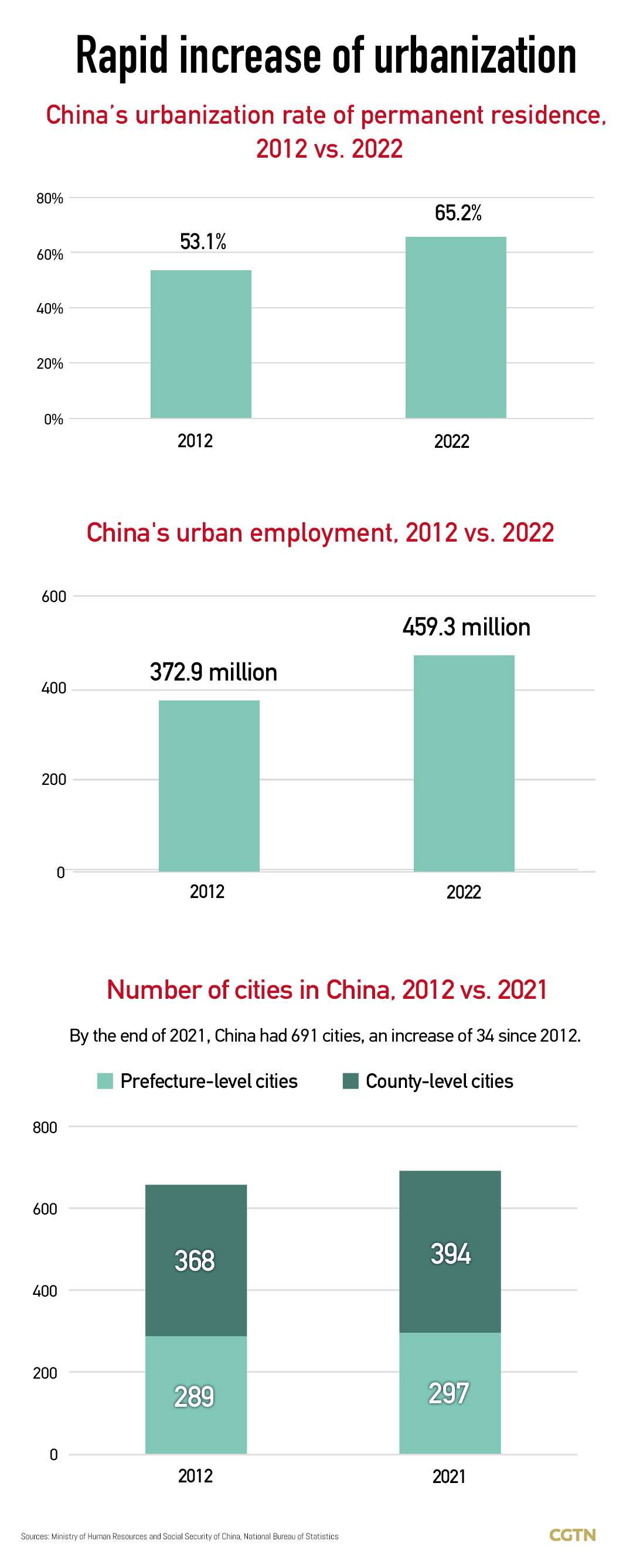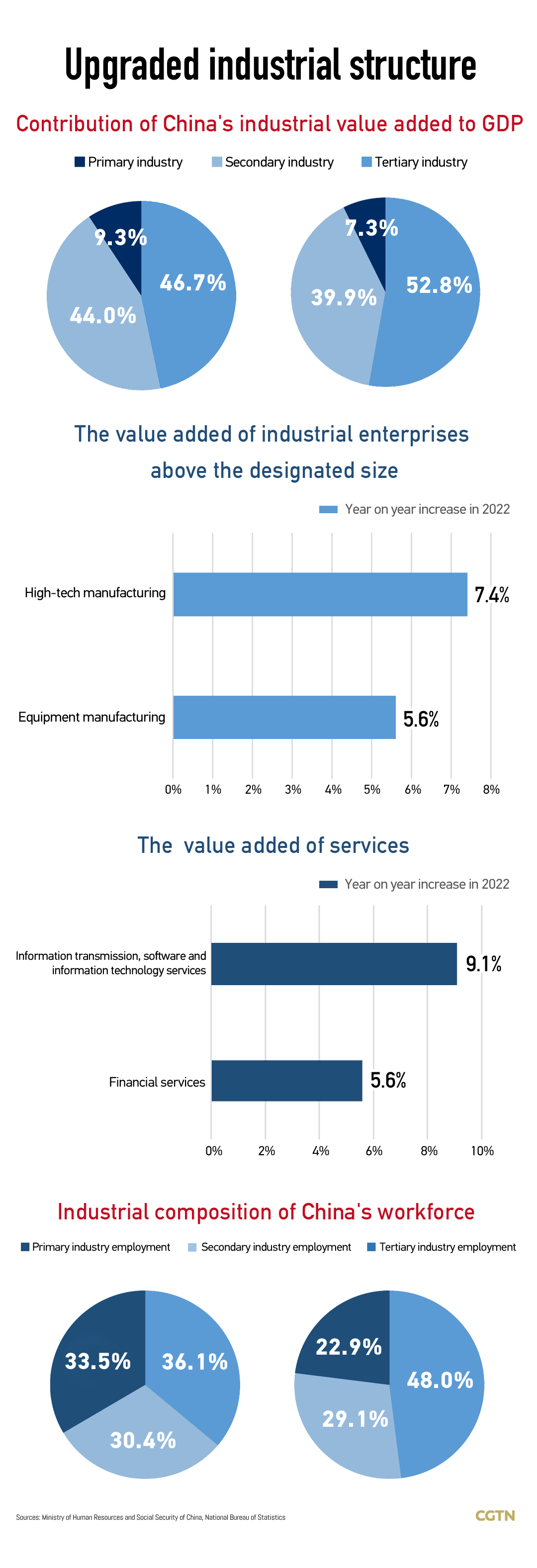By the end of April, India is expected to surpass China as the most populous country in the world, according to UN projections released on Monday.
Reacting to the recent UN's population estimates, the Chinese Foreign Ministry said on last Wednesday that while a country's demographic dividend depends on the population's quantity, the population's quality is more important; the scale of the high-caliber workforce is more important than the size of the population.
Rapid increase of urbanization
China's urbanization is expected to be one of the driving forces for the country's economic development. According to the latest data from the National Bureau of Statistics, urban employment reached 459.3 million in 2022, an increase of 86.4 million since 2012. The urbanization process has increased steadily, with the country's urbanization rate of permanent residence reaching approximately 65.2 percent in 2022.

Since the 18th National Congress of the Communist Party of China, the city scale and structure have continued to improve. By the end of 2021, China had 691 cities, an increase of 34 since 2012.
Upgraded industrial structure
Along with the continuous improvement of urbanization, the country has also accelerated the transformation of the economic growth model and upgraded the industrial structure. In 2022, the contribution of China's value added of tertiary industry to GDP reached 52.8 percent, increasing over 6 percent over ten years.

It is worth noting that the total value added of industrial enterprises above the designated size in 2022 increased by 3.6 percent from the previous year. The value added of high-tech manufacturing and equipment manufacturing went up by 7.4 percent and 5.6 percent, respectively.
The value added of services went up by 2.3 percent year on year in 2022. The value added of information transmission, software and information technology services, and that of financial services grew by 9.1 percent and 5.6 percent, respectively.
According to data from the Ministry of Human Resources and Social Security of China, the industrial composition of China's workforce has undergone significant changes over the past decade. The most notable change was in the tertiary industry, which increased from 36.1 percent in 2012 to 48 percent in 2021.
Read more:
Chart of the Day: China's tech innovation fosters talent, boosts economic growth
Chart of the Day: Education level in China up over past 20 years